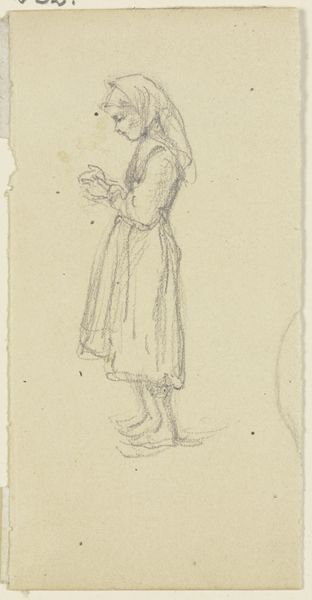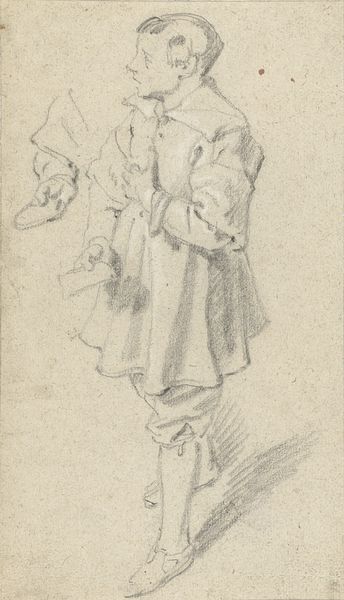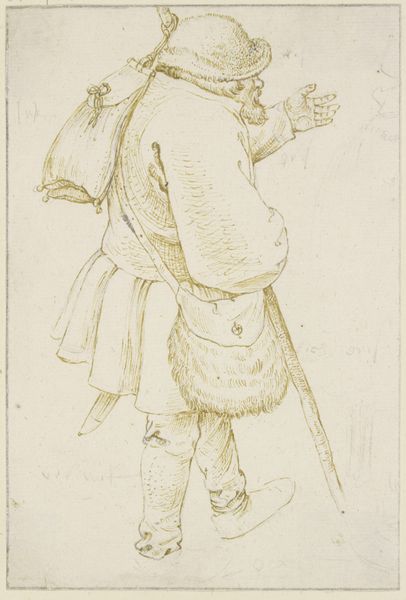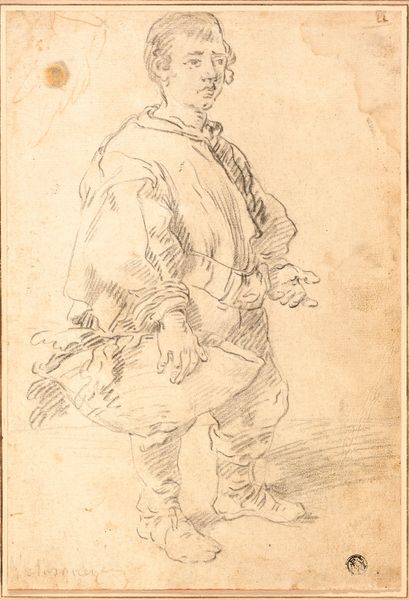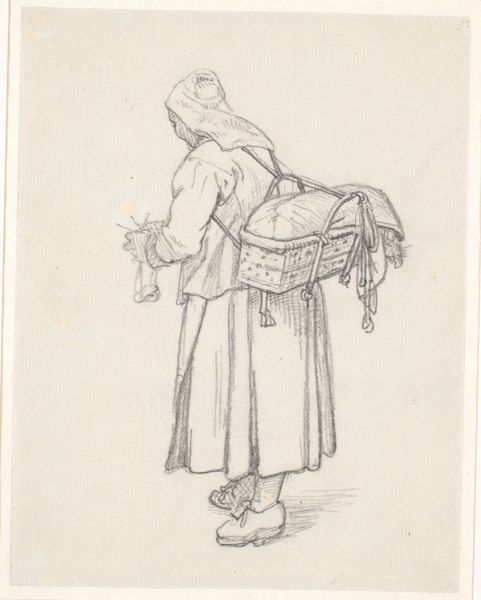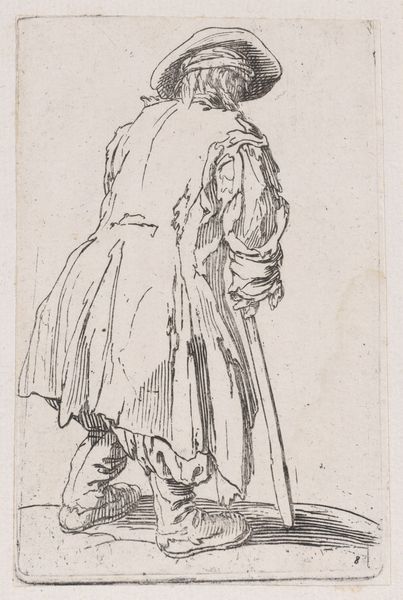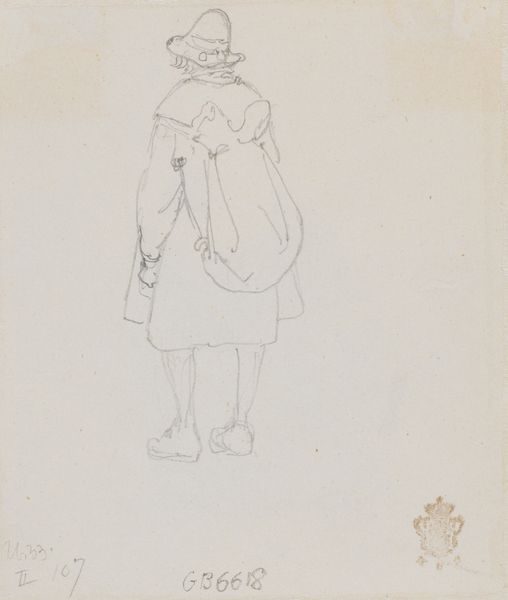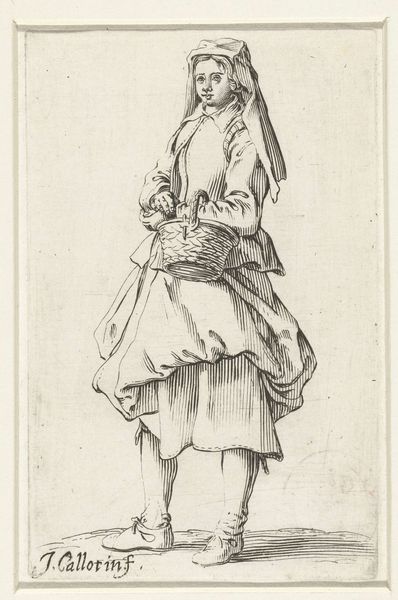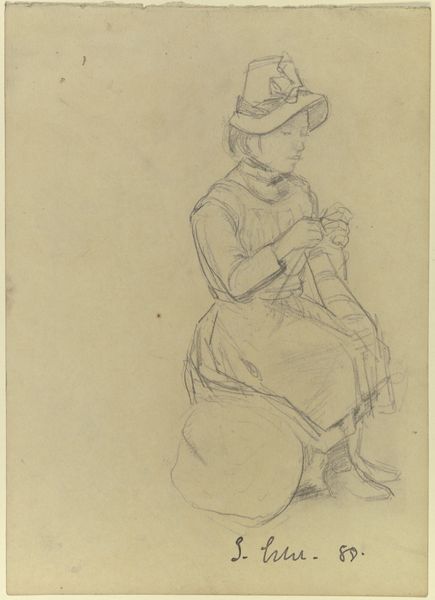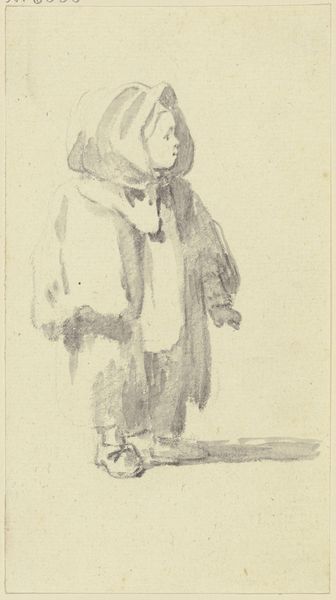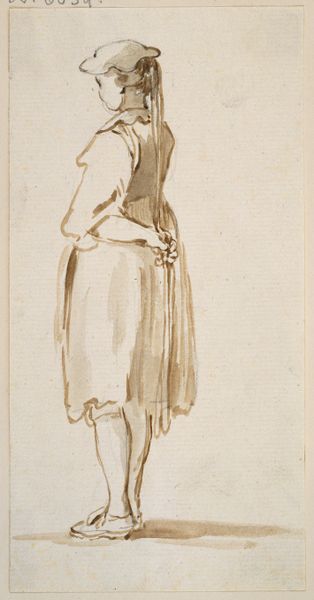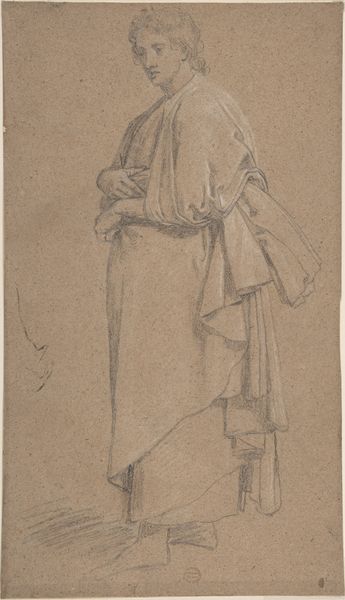
Stehender Wanderer mit Stab und Gepäck auf dem Rücken, fast vom Rücken gesehen c. 1771 - 1772
0:00
0:00
Copyright: Public Domain
Georg Melchior Kraus sketched this standing wanderer with pencil on paper. The figure, staff in hand and belongings on his back, embodies a motif as old as civilization itself: the journey. The image of the wanderer, laden with worldly possessions, echoes through art history from religious iconography to Romantic paintings. Consider the biblical figures like Moses, who carry their people and their laws through the desert. The motif of carrying burdens has evolved from literal to allegorical representations of life's journey and spiritual quests. This wanderer carries more than just physical weight; he bears the weight of human experience. Psychologically, the bag suggests the burdens we accumulate – memories, experiences, traumas – which shape our identity and influence our path. The act of walking, of constant motion, is a metaphor for the relentless passage of time. The image of the wanderer resonates deeply because it reflects the universal human condition. This enduring figure persists and is continually reinterpreted across different epochs.
Comments
No comments
Be the first to comment and join the conversation on the ultimate creative platform.
